Bluetooth Audio Receiver
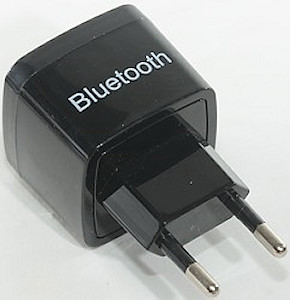
Official specifications:
- Bluetooth version: bluetooth V3.0 + EDR
- Supported bluetoothprofiles: A2DP
- Operational range: up to 10m/33ft
- Input: AC 100V-240V
- USB output: DC 5V/1A
- Dimension: 39 x 39 x 31mm
It is from aliexpress dealer: Tomsale CO., Ltd
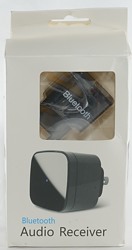

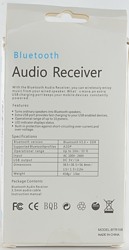

I got it in a card board box with specifications on the back.

It included the charger, a mini jack cable and an instruction sheet.
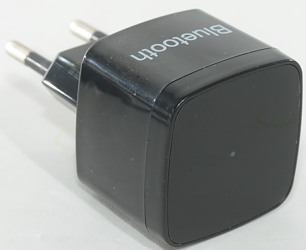
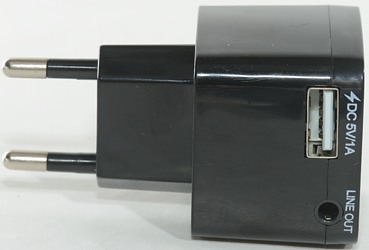

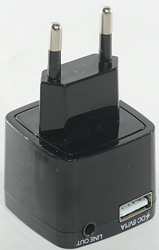
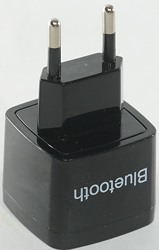
Measurements tests
Powering it up and pairing it with the phone was easy enough, it is called BTR108 and my HTC phone can easily use it for sound output device.
But for nearly reliable connection the phone must be within 0.5 meter of the receiver, at longer distances there will be break-ups in the music. How often will depend on the distance (A couple of meters and it is rather bad).
The music sounds fine to my untrained ears.
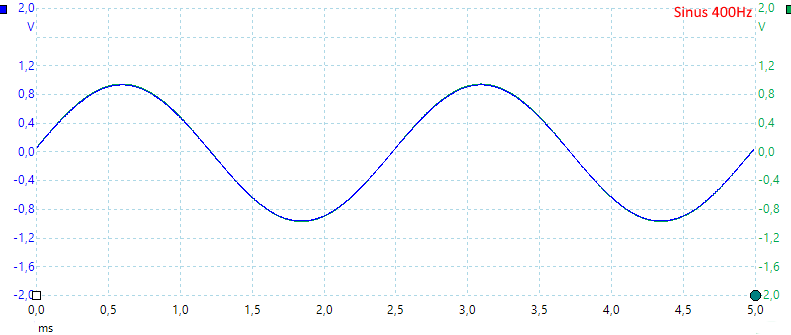
It is digital data transfer most of the way, how well do it handle the high and low frequencies?
Compare the size of this curve to the ones below, all curves includes both left and right channel, that is difficult to see because they match perfectly.

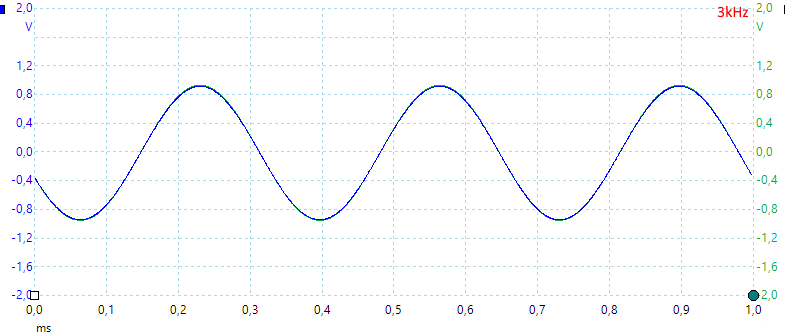
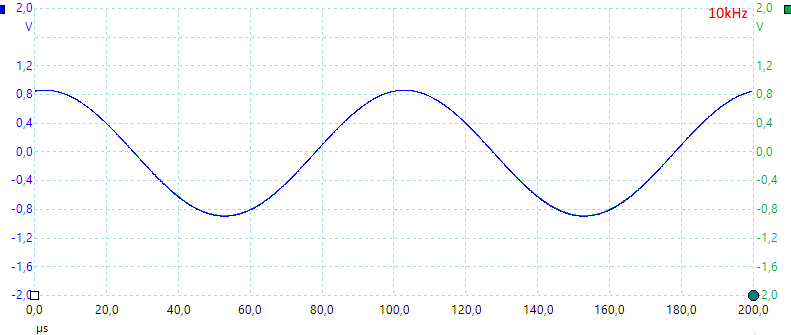
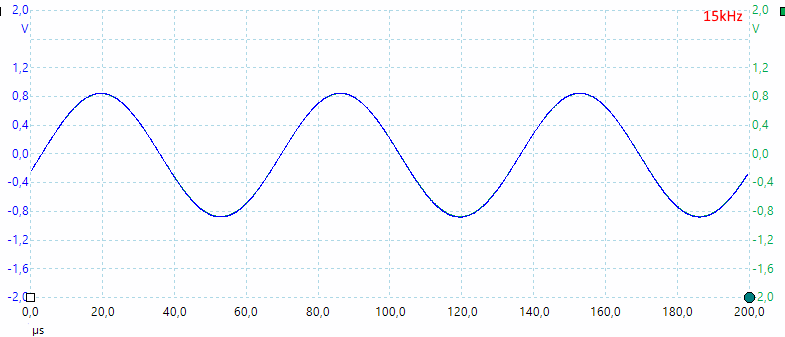

From 20Hz to 15kHz is sound level is constant, at 20kHz is dropped about 3dB, this is better than the ear.
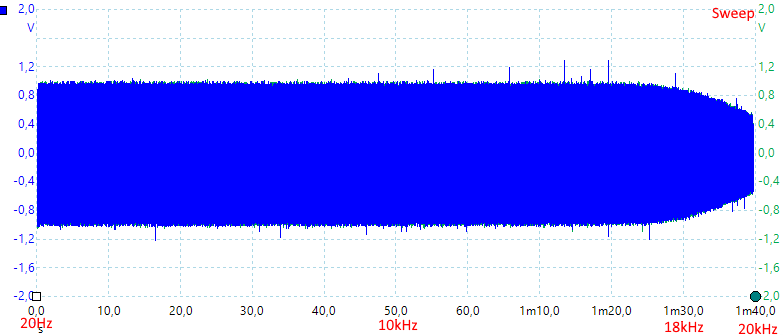
Another way to look at it, here I programmed the frequency generator on the phone to do a sweep and then recorded it on the scope. It looks like the output starts dropping at 17kHz
The spikes are some high frequency noise, that I filtered out on the other curves with a 40kHz filter.
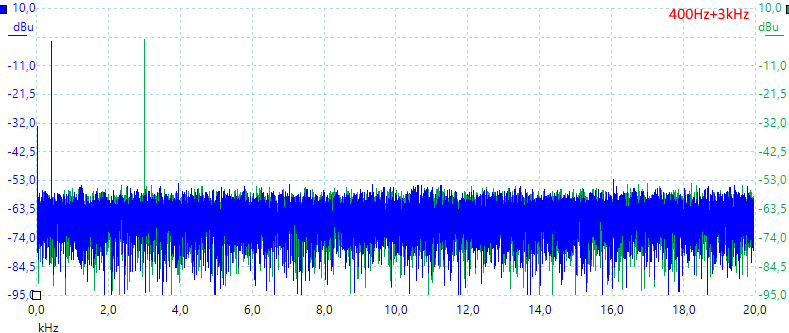
Another test, I uses two different frequencies in the two channels and looks for any harmonics or sum/differences of the two frequencies, none can be seen.
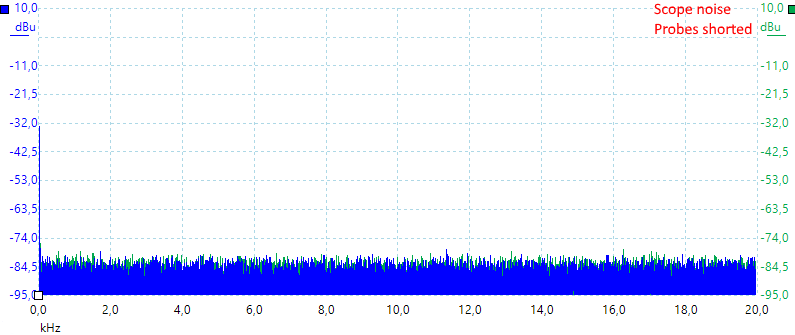
But there is some noise, in the above I shorted my scope inputs (Connected the probe ground lead to the probe tip).
I did run my scope in 15 bit mode for the above spectrums.
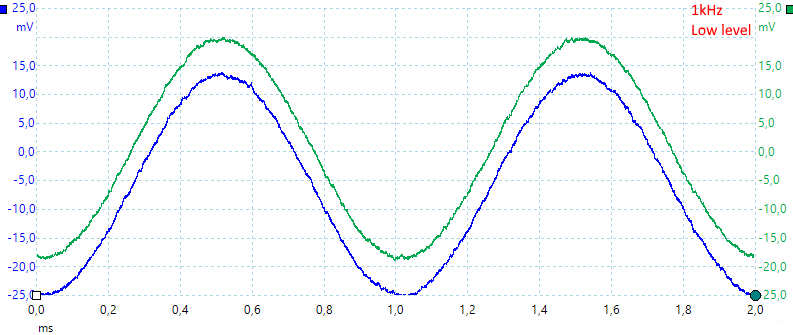
Here I reduced the sound level on my phone. On my stereo there is some hiss when running at very low levels.
Measurements
- Power consumption when idle is 0.08 watt
- Power consumption when playing is 0.5 watt
- USb output is coded as usb charger (DCP)
- Weight: 37.0g (Without accessories).
- Size: 66.2 x 38.7 x 38.5mm
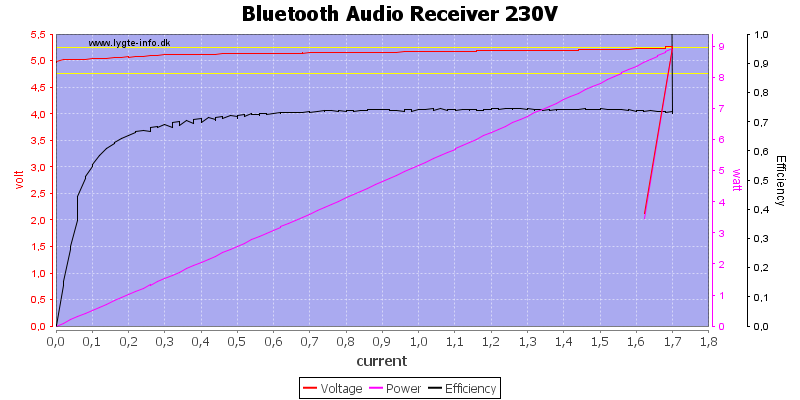
It can easily deliver the rated 1A, overload first kicks in at 1.7A. Efficiency is not not that great.

It works the same way at 120VAC
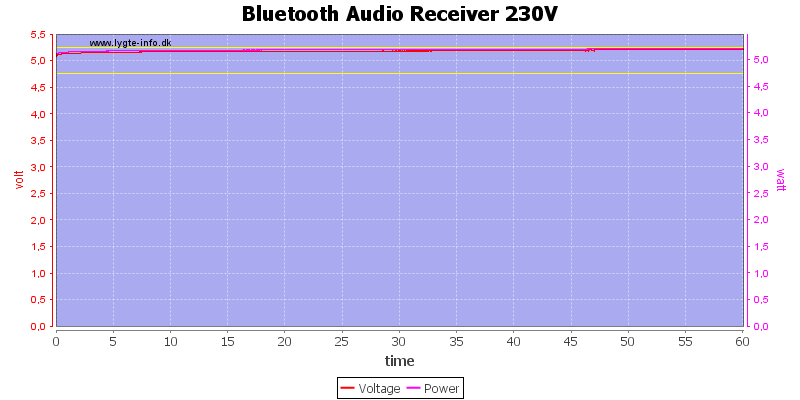
No problems running one hour at 1A.
The temperature photos below are taken between 30 minutes and 60 minutes into the one hour test.
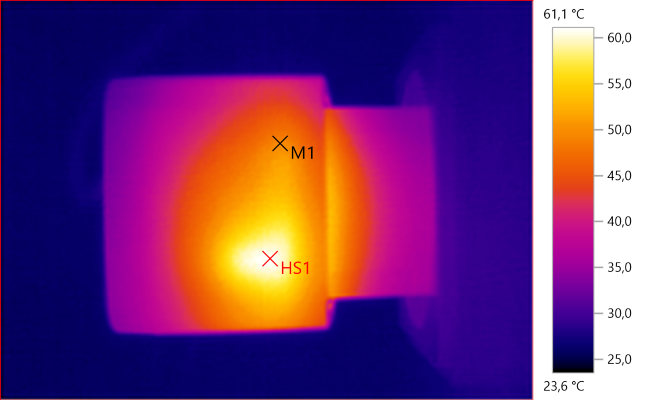
M1: 49,4°C, HS1: 61,1°C
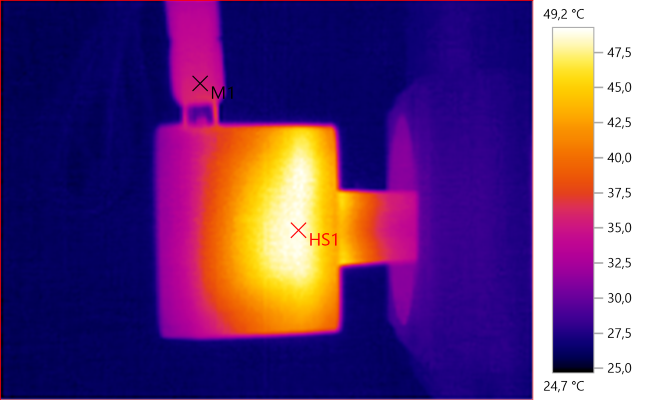
M1: 35,4°C, HS1: 49,2°C
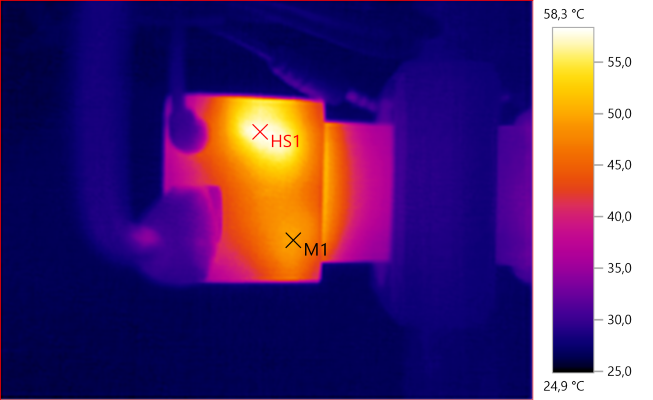
M1: 49,3°C, HS1: 58,3°C
Here HS1 is the rectifier diode.

M1: 56,9°C, M2: 36,3°C, HS1: 62,0°C
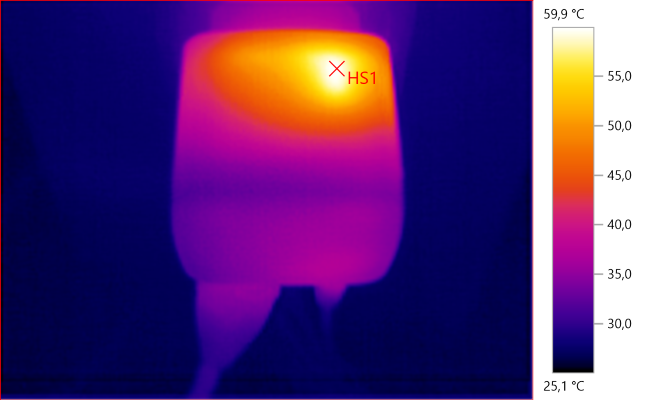
HS1: 59,9°C

At 0.5A the noise is 107mV rms and 1500mVpp.

At 1A the noise is 300mV rms and 3200mVpp, a bad result.
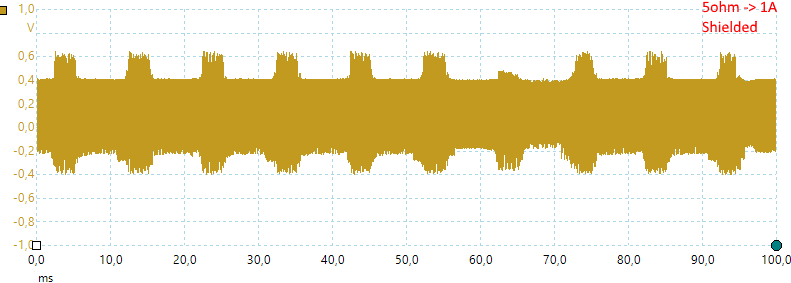
The above looks extremely bad and I decided to try my shielded setup. This eliminates any radiated noise, usual this will give about the same RMS value and on some power supplies a lower peak value.
At 1A the noise is 100mV rms and 947mVpp, this is still very bad and it looks like the supply radiates a lot of noise.
Tear down
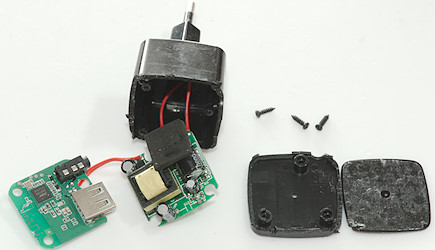
This looked like something I could press a little and the lid would pop off, but that was not the case. Then I tried cutting and could see that there where pillars for screws. By removing a very well glued front I could remove the screws and the circuit board could easily be taken out.
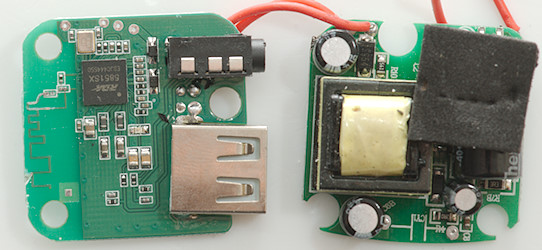
Notice the black foam on top of the large capacitor, that is what keeps the two circuit board separated, i.e. keep mains away from the low volt stuff.
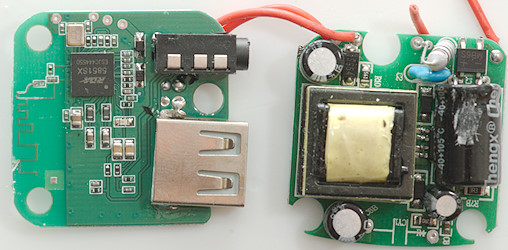
The audio board uses a RDA5851SX chip. I did not find the data sheet for that chip only the RDA5851S (The X may be an upgrade from Bluetooth 2.1+EDR to 3+EDR). The chip has a 16 bit stereo DAC with up to 48kHz sample rate. In addition to the chip there is a crystal (26MHz), a led and the antenna.
The other circuit board is the power supply with a fusible resistor and a bridge rectifier at the input and a rectifier diode with two capacitors at the output.
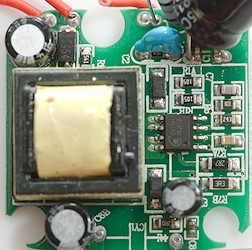
The above was not enough for a power supply, the parts are hidden below the capacitor. The switcher is a CX7161, the data sheet shows a couple of filtering components that is missing in this design.
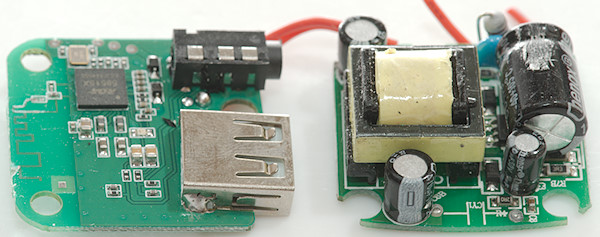
From this side it is obvious that the safety capacitor (CY1) is missing, it is used to reduce noise.
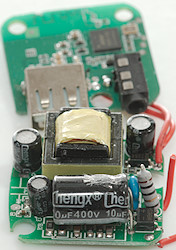

On the power supply board the big capacitor with everything under it is in front. On the audio board the Bluetooth antenna is in front.
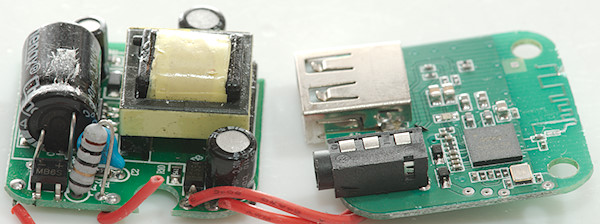
On the power supply board the fusible resistor and the bridge rectifier is in front. On the audio board the crystal.

Nothing on this side. Notice there is no copper under the Bluetooth antenna or it would not have worked.
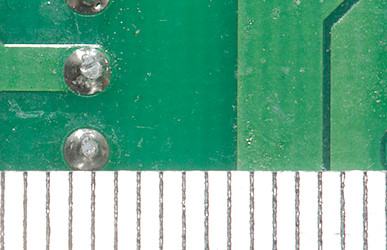
Safety distance is slightly on the low side, I am more worried about the foam between the two circuit boards.
Testing with 2830 volt and 4242 volt between mains and low volt side, did not show any safety problems.
Conclusion
Bluetooth receivers are fairly cheap and by combining it with a usb power supply it is possible to charge the phone while it is playing. I have been using it on my stereo that do not have Bluetooth. It works fairly well, but the phone must be rather close.
As a usb charger it can easily deliver the rated current, but I am not impressed with the noise.
All in all I will call it an acceptable solution, but not a good one.
Notes
I connected the Bluetooth module to another usb power supply, it worked as before, i.e. same problem with range and break-ups.
Index of all tested USB power supplies/chargers
Read more about how I test USB power supplies/charger
How does a usb charger work?









































